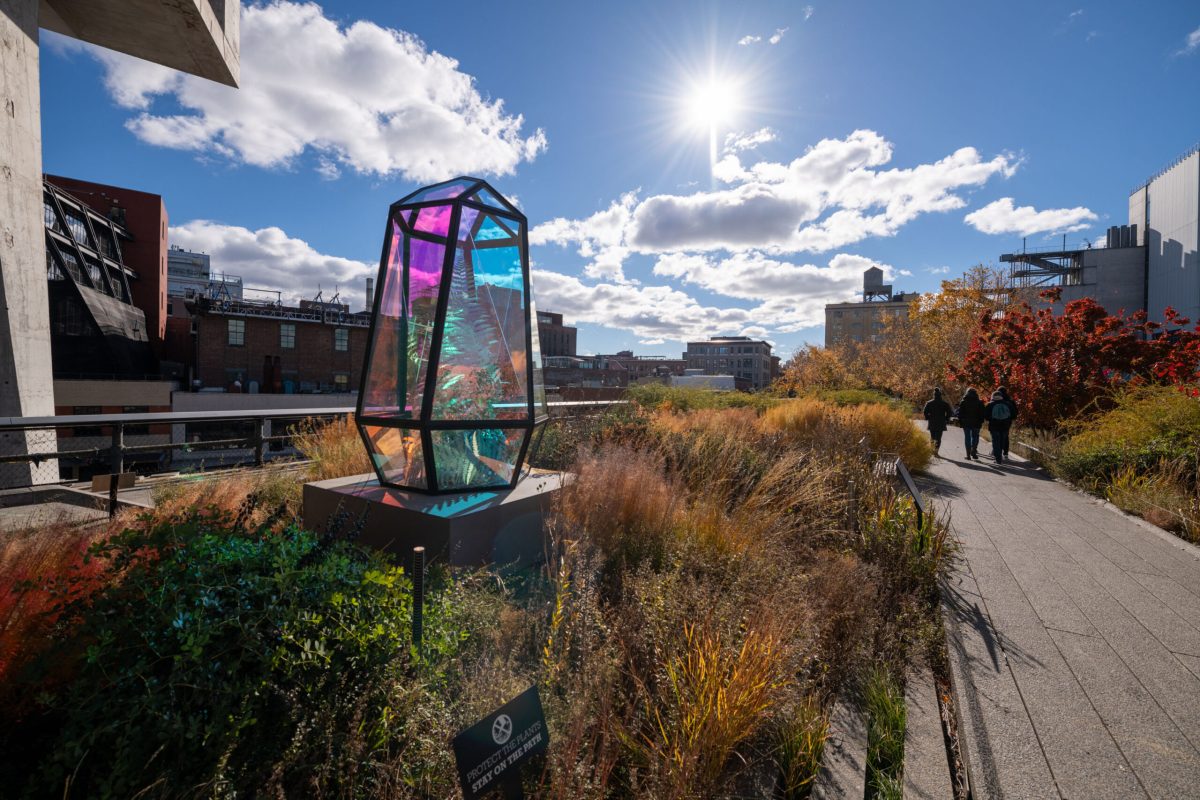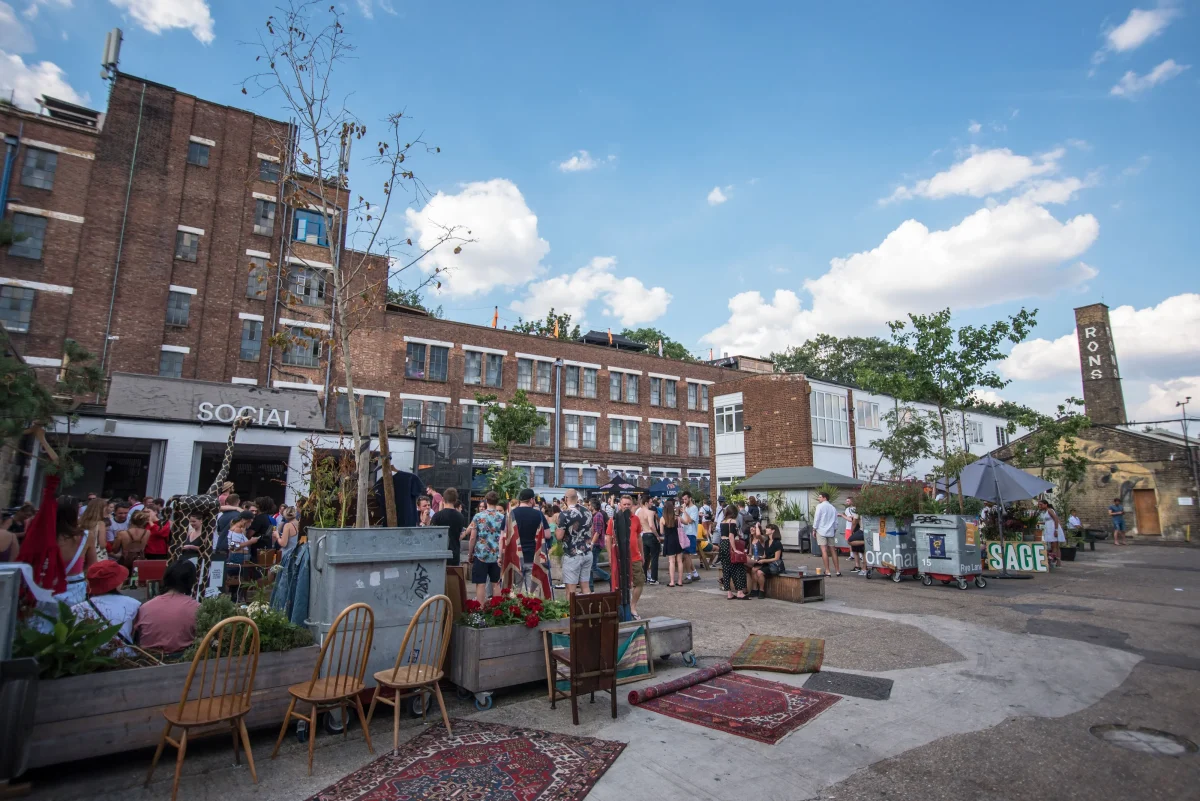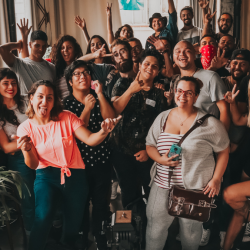As brands fight for attention, relevance and creative cut-through online, ‘place’ can be a powerful domain for making meaningful and lasting relationships with audiences. Defined by urbanists and anthropologists as ‘space with meaning’, place has been a powerful part of every culture throughout history. It’s where public life is played out. A place can vary in size but it’s always experienced at a human scale, smaller than a city and embedded within a neighbourhood.
‘Place-making’ is the discipline of creating and shaping places. It involves the design of spaces, often within the built environment, to create meaningful experiences for the people who inhabit and use them. It encompasses everything from facilitating citizen assemblies, choreographing sensory elements, naming, signposting through to cultural programming. Good place-making can take new developments and ensure they have soul and character, or it can revive old corners and inject vibrancy and attract diverse place users. Think of New York City’s High Line — an iconic place project that’s inspired many.


The site was dead space in an incredibly dense city. Beyond the creation of the park infrastructure itself, the public programming, the intuitive mapping of different kinds of use-cases and journeys, and the attention to atmosphere and safety have made it an iconic place in this global city. The High Line has massively benefited businesses in the area, but the place itself is so successful because it was designed as a public space experience first. We can see parallels for brands in this — concentrate on creating value in culture and other kinds of returns will come.
Investment in cities and urban development is skyrocketing. With critical factors including population growth, the housing crisis, and climate change driving the need for sustainable urban infrastructure, private and public investors are increasingly collaborating to shape the future of cities and suburbs. Brands will play a role in shaping these futures. But brands can easily become negative symbols of change in places. Their presence can signal gentrification, bland globalism or even economic downturn. But culturally savvy brands have a unique opportunity to participate positively, by injecting agility and creative vision into the process of shaping neighbourhoods and connecting physical space with the wider cultural and creative landscape. Thinking like a place-maker can help brands ensure their presence in a neighbourhood is a force for good.
So why should brands care about Place?
Authentic narratives
Thinking local is no longer separate from a global strategy mindset. Many culturally savvy brands have already embraced city-based and hyper-local strategies as a way to inject authenticity. Travel brands like AirBnB, Hotel Indigo or user-curated app Amigo are adopting hyper-local approaches to cater to younger travellers seeking authentic ‘vibes’ rather than bucket list itineraries. Fashion brands are leveraging local partnerships to create deeper affiliations. For instance Louis Vuitton hosted a month-long residency in Fotografiska Shanghai with programming celebrating Shanghai culture generating notable attention from Chinese youth who connected with the local talent, trends and heritage.

And brick-and-mortar retail experiences are using a sense of place to enhance brand storytelling. For instance Aesop’s boutiques whose interiors are designed to integrate into place and local material supply chains, or Alo Yoga’s stores, which function as community studios. We see this in media, too, with shows like The White Lotus immersing viewers in a strong sense of place and influencing travel trends, or how The Bear’s loving depiction of Chicago’s food scene has inspired many a TikTok recipe. World-building video games continue to grow, with audiences of all ages and genders — the attraction of creating, exploring and inhabiting a virtual place is compelling. Key to ‘authenticity’ is specificity — place helps add that dimension of cultural specificity which might explain the appeal of narratives with a strong ‘sense of place’. A place is anchored in a particular landscape and community, even as it morphs and evolves.
Niche community centres
Niche communities are increasingly defining the shape of popular culture and brand relevance, and often there is a place-based component to them. Much in the same way that heritage brands leverage mythologies of origin (Italian Campari, Californian Apple, French Chanel), today’s niche communities and brands have new forms of place-attachment which anchors their narrative and aesthetic. The boom in physical book and record sales has been accompanied by thriving stores, cafes and event spaces that deepen this connection to material culture and indie sensibilities. They’re tapping into the romance of being in-place with other fans and aficionados. In turn, these local places contribute to the ‘brand’ power of their neighbourhoods and cities — attracting visitors and new residents (for better or worse!).
Cult brands like London streetwear brand Corteiz leverage place-based activations (Corteiz are famed for their surprise product drops on street corners) that generate viral social media moments. Corteiz’s local strategy hasn’t alienated audiences outside of London, but has created a foundational layer of exclusivity — now tapped by Nike — that functions via cultural capital rather than pricing. Decentralised communities of interest like Trust (Berlin) and Index (New York) which have flourished through and around the web3 movement, are moving from their group chats, Discord servers and newsletters to invest in physical places co-owned and co-run by the community. A signal that digital-physical hybridity flows both ways. The decentralisation and nichification of culture online might surface new opportunities for shaping interesting places offline.
Brands could innovate as investors in new cultural centres for the niche communities that influence and legitimise their cultural value.
Place, better than country, encapsulates contemporary cultural identities
Thinking about ‘place’ can help us update how brands understand their consumers and audiences, too. As cultural identities become increasingly shaped by diaspora experiences, culture drawn by national borders over-simplifies and fails to capture the diverse identities and tastes of contemporary audiences. Places and their neighbourhoods have a beautiful way of encompassing different temporalities — heritage coexists with the future and both leave their mark on the present. A place like Bussey Building in Peckham, London is a dynamic commercial and cultural space, defined and shaped by the local community — and you’ll see different intersections of Peckham’s cultural heritage represented and thriving there.

Place can help us reconcile the tension between preserving and progressing culture — when owned or programmed by local communities, culture is really alive. It’s not about nostalgia.
Brands should invest in neighbourhood and place-scale insights and strategies because they offer intimate, interconnected and tangible framing of the cultural identities they’re affiliated with, and how those identities are negotiated and reinvented everyday.
Dynamic and sustainable investments
‘Place’ can offer an inspiring framework for understanding culture and communities. But brands can also think about investing in place-based assets in more tangible ways. With the proliferation of city developments, there are countless opportunities for smart ‘meanwhile use’ initiatives. These are spaces which can be occupied temporarily (for months or years during development) to make use of resources and ensure the area doesn’t go dark.
Brands could use these spaces to activate initiatives with their community partners. They could pilot new innovations in decentralised production, sustainable last-mile delivery or cultural programming. The key is to bring something to a neighbourhood, to work with the local identity and ecology and keep the spark of the streets alive.
Uniting purpose and brand
Place can be a channel for uniting brand purpose and activation. Investing in infrastructure and local resources is a very visible and direct way of supporting communities while creating memorable cultural connections. The key to thinking like a place-maker here is to invest with clear intentions and commitments and engage the community in the plans at every step. Brands can become very present and visible locally, and therefore the affiliation they can create is deeper — but that also means the fallout from letting a community down can be severe.
We can use ‘place’ as both an inspiring framing for cultural strategy and a physical channel for meaningful brand communication and activation. Thinking like a place-maker calls brands to consider time-tested criteria for cultural relevance that can be lacking in our digital-first era; community participation, long and short term thinking and the balance of authenticity and progress.
Featured image: Copeland Park and Bussey Building































